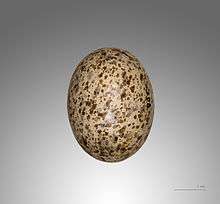Four-banded sandgrouse
| Four-banded sandgrouse | |
|---|---|
 | |
| Scientific classification | |
| Kingdom: | Animalia |
| Phylum: | Chordata |
| Class: | Aves |
| Order: | Pteroclidiformes |
| Family: | Pteroclididae |
| Genus: | Pterocles |
| Species: | P. quadricinctus |
| Binomial name | |
| Pterocles quadricinctus (Temminck, 1815) | |

The four-banded sandgrouse (Pterocles quadricinctus) is a medium-sized bird in the sandgrouse family.
It breeds in a belt across Africa from Mauritania and Cameroon east to Sudan and Uganda. It is much more common in the west of its range. It is a partial seasonal migrant, with some birds moving further north in the rainy season.
This gregarious species breeds on open areas with some trees, including savanna, scrubland and similar habitats. Its nest is a ground scrape into which 2 or 3 buff eggs with brown markings are laid. Both sexes incubate.
The Four-banded Sandgrouse is 25–28 cm long. Its head, neck and upperparts are yellowish-green, with the back heavily marked with brown. The male has black and white bands on its forehead as well as black and white bands separating the breast from the heavily barred belly. The female lacks the head and breast bands and is heavily barred on the back and flanks.
This sandgrouse has a small, pigeon-like head and neck, but a sturdy compact body. It has long pointed wings, which are grey underneath, a short tail and a fast direct flight. Flocks fly to watering holes in the evening to drink and are largely nocturnal.
The call is a loud wulli-wulli, and there is much twittering at the drinking holes.
References
- ↑ BirdLife International (2012). "Pterocles quadricinctus". IUCN Red List of Threatened Species. Version 2013.2. International Union for Conservation of Nature. Retrieved 26 November 2013.
- Pheasants, Partridges and Grouse by Madge and McGowan, ISBN 0-7136-3966-0
